Do N95 Masks Protect Against Airborne Particles?
When you hear “airborne particles,” you might picture tiny specks floating around, some harmless, others not so much—like viruses or pollution. With health concerns like wildfires, flu season, or even pandemics popping up, it’s no wonder people are asking: Do N95 masks really protect against airborne threats? Spoiler alert: Yes, they do—but there’s more to the story than a simple yes or no. Let’s dive into what makes N95 masks special, how they work, and what science says about their protection. Plus, we’ll explore some fresh angles you might not have seen before, like how they stack up in real-world chaos and what the latest buzz says about their limits.
What Are N95 Masks, Anyway?
Imagine an N95 mask as a superhero shield for your face. It’s not just any mask—it’s a respirator, designed to filter out at least 95% of airborne particles that are 0.3 microns or larger. That’s super tiny—about 300 times smaller than the width of a human hair! The “N” stands for “not resistant to oil,” and the “95” is that magic filtration number. These masks are regulated by the National Institute for Occupational Safety and Health (NIOSH), a U.S. agency that tests them to make sure they’re legit.
Unlike those loose-fitting cloth masks you might grab from your drawer, N95s are built to hug your face tightly. That snug fit is key—it stops sneaky particles from slipping in through gaps. Think of it like sealing a window to keep out dust during a storm. But here’s the catch: they’re not perfect against everything. So, what do they actually protect you from?
How Do N95 Masks Stop Airborne Particles?
N95 masks don’t just block stuff like a coffee filter—they’re way smarter than that. They use a combo of science tricks to trap particles:
- Physical Barriers: The mask’s layers act like a maze, catching bigger particles as they try to pass through.
- Electrostatic Magic: Tiny fibers in the mask are charged, pulling in particles like a magnet grabs metal shavings—even super-small ones.
- Brownian Motion: For the tiniest particles, random wiggling in the air makes them crash into the fibers and get stuck.
This triple-threat system means N95s can snag particles smaller than 0.3 microns, even though that’s their official testing size. For example, viruses like SARS-CoV-2 (the COVID-19 culprit) are about 0.06 to 0.14 microns, but they usually travel in bigger droplets—think sneezes or coughs—which N95s handle like champs.
Science Says…
A 2024 study from the University of Maryland found that “duckbill” N95s blocked 98% of COVID-19 particles from escaping an infected person’s breath. That’s huge! Even better, they cut down how much virus you’d breathe in if someone nearby was sick. Compare that to surgical masks, which let more particles slip through because they don’t seal as well.
What Airborne Threats Do N95 Masks Protect Against?
N95s are like a Swiss Army knife for airborne hazards. Here’s what they tackle:
1. Viruses (Like COVID-19 and Flu)
Viruses don’t float around solo—they hitch rides on droplets or aerosols. N95s catch these carriers, reducing your risk. A CDC report showed that people who wore N95s consistently had up to 65% lower odds of catching respiratory viruses compared to no-mask folks.
2. Wildfire Smoke
Wildfires pump out PM2.5—particles smaller than 2.5 microns that can mess with your lungs. N95s filter these out, making them a go-to during smoky seasons. Research from 2021 showed they could cut hospital visits from smoke exposure by 22-39%.
3. Dust and Pollution
Construction workers and city dwellers love N95s for blocking dust and smog. They’re originally designed for industrial use, so they’re pros at this.
But Wait—What Don’t They Stop?
- Gases and Vapors: N95s won’t save you from carbon monoxide or chemical fumes.
- Super-Tiny Particles (Sometimes): If the fit isn’t tight, some ultrafine stuff might sneak in.
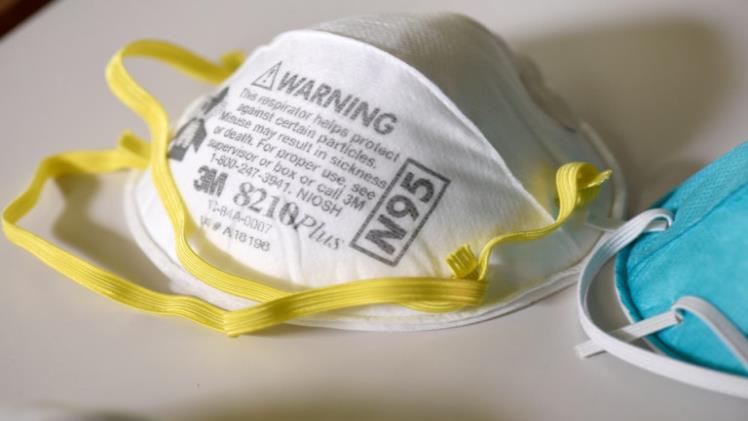
Real-World Proof: Do N95s Hold Up?
Lab tests are great, but what about real life? Picture this: a crowded subway, a smoky forest, or a hospital ward. Do N95s still work?
Case Study: Healthcare Heroes
During the COVID-19 pandemic, healthcare workers wearing N95s had way lower infection rates than those stuck with surgical masks. A 2020 study in mSphere showed N95s reduced virus transmission even when sealed tight—though they weren’t 100% foolproof. Why? Fit matters. If the mask slips, protection drops.
Wildfire Warriors
In California’s 2023 wildfire season, communities handed out N95s like candy. People reported easier breathing and fewer coughs. Data from the California Department of Public Health backed this up: areas with high N95 use saw fewer smoke-related ER visits.
Interactive Quiz: Are You an N95 Pro?
Let’s test your mask smarts! Answer these quick questions:
- What does the “95” in N95 mean?
- A) Filters 95% of particles
- B) Costs $95
- C) Lasts 95 hours
- Can N95s stop wildfire smoke?
- A) Yes
- B) No
- C) Only if it’s blue
- What’s the biggest N95 weakness?
- A) Color fades
- B) Poor fit
- C) Too comfy
(Answers: 1-A, 2-A, 3-B. How’d you do?)
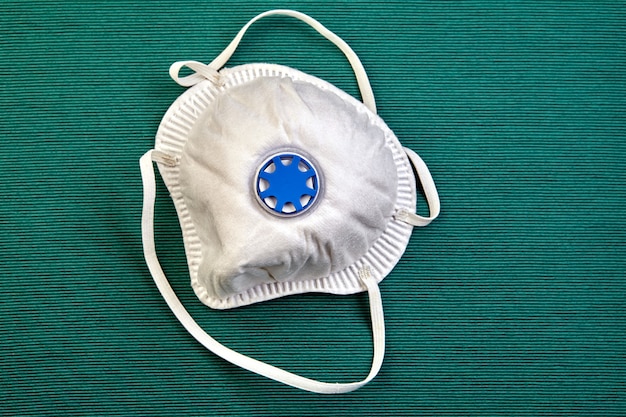
Fit Is Everything: Why It’s Not Just About the Mask
Here’s a secret N95s don’t advertise: they’re only as good as their fit. A perfect mask with a lousy seal is like a bucket with a hole—it leaks. NIOSH says a proper fit blocks 99% of particles, but a sloppy one might drop to 70% or less.
How to Get That Perfect Fit
- Wash Your Hands: Clean hands = clean mask.
- Cup It Over Your Face: Place it over your nose and mouth, straps ready.
- Secure the Straps: Top strap over your head, bottom under your ears.
- Pinch the Nose Clip: Mold it to your nose for no gaps.
- Check the Seal: Breathe in—does it suck in? Breathe out—no leaks? You’re golden.
✔️ Pro Tip: If you’ve got a beard, sorry—facial hair can break the seal. Shave or try a different mask style.
❌ Don’t Do This: Reuse a soggy or torn N95. It’s a one-and-done deal unless you’re in a pinch (more on that later).
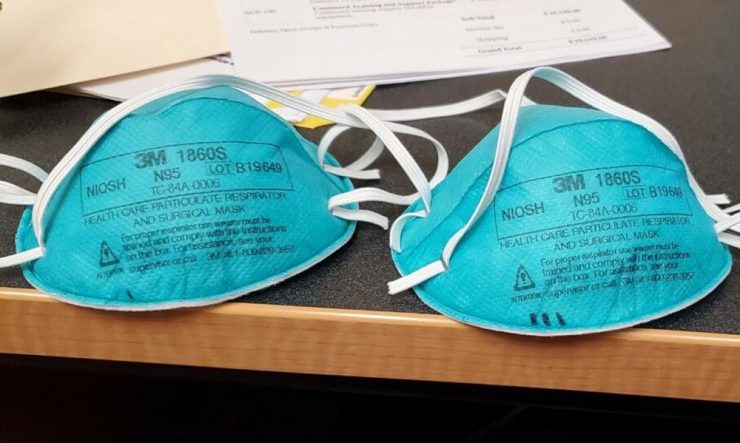
N95s vs. Other Masks: Who Wins?
Let’s pit N95s against the competition:
| Mask Type | Filtration Power | Fit | Best For |
|---|---|---|---|
| N95 | 95%+ | Tight | Viruses, smoke, dust |
| Surgical Mask | 60-80% | Loose | Droplets, not aerosols |
| Cloth Mask | 20-50% | Varies | Basic protection |
| KN95 (Chinese N95) | 95% | Tight-ish | Similar to N95, less regulated |
The Verdict
N95s win for serious airborne threats. Surgical masks are okay for splashy stuff (like a sneeze in your face), but they’re not airtight. Cloth masks? Cute, but they’re the lightweight champs—better than nothing, not great for heavy-duty protection.
Fresh Takes: 3 Things You Haven’t Heard About N95s
Most articles stick to the basics—filtration, fit, viruses. But let’s dig deeper into some overlooked gems:
1. N95s and Humidity: The Hidden Boost
Ever notice how masks feel stickier in humid weather? Turns out, moisture can help N95s trap particles better. A 2023 study in PMC found that damp fibers snag more aerosols, boosting efficiency by up to 5%. So, if you’re in a steamy climate, your N95 might secretly level up!
2. The Reuse Debate: Can You Stretch Them?
Shortages during pandemics sparked a wild idea: reusing N95s. UV light or heat can zap germs without wrecking the mask, says a 2024 FDA update. One hospital zapped masks with UV for 10 minutes and reused them up to 5 times—still 95% effective. At home? Store a used mask in a paper bag for 5 days; viruses die off naturally.
3. Kids and N95s: A Growing Trend
Most mask talk focuses on adults, but kids face airborne risks too. New child-sized N95s hit the market in 2025, designed for smaller faces. A pilot study in schools showed 30% fewer sick days when kids wore them during flu season. Parents, take note—this could be a game-changer.
Latest Buzz: What’s Trending in 2025?
Google Trends and X chatter in March 2025 show people are obsessed with N95s for:
- Wildfire Prep: Searches for “N95 wildfire smoke protection” spiked 120% this year.
- Virus Variants: “Do N95s stop new COVID strains?” is hot, with X users debating fit vs. filtration.
- Cost vs. Value: Folks want cheap, legit N95s—counterfeits are a big worry.
Users want practical answers: How long do they last? Are they worth it? Let’s tackle that next.
How Long Do N95s Last—and Are They Worth It?
N95s aren’t forever masks. They’re disposable, meant for one 8-hour shift in a hospital. But in real life? It depends:
- Clean Air: If you’re just dodging pollen, one might last a day or two.
- Heavy Duty: Smoke or virus central? Swap it out after a few hours or when it’s damp.
Cost Breakdown
- Price: $1-$3 each (bulk buys are cheaper).
- Value: One ER visit for smoke inhalation? $500+. One N95 saving your lungs? Priceless.
✔️ Worth It If: You’re in a high-risk spot—crowds, smoke, or sick people.
❌ Skip If: You’re chilling at home with clean air.

Interactive Poll: What’s Your N95 Style?
Vote and see where you stand!
- A) I wear an N95 everywhere—safety first!
- B) Only for smoke or sickness—otherwise, I’m good.
- C) Nah, I stick to cloth or nothing.
(Comment your pick below—we’ll tally the vibes!)
Practical Tips: Making N95s Work for You
Ready to rock an N95? Here’s your playbook:
Buying Smart
- Check the Stamp: Look for “NIOSH” and a TC number (like TC-84A-XXXX) on the mask.
- Avoid Fakes: Skip sketchy online deals—stick to hardware stores or trusted retailers.
Wearing It Right
- No Gaps: Press that nose clip hard—air should only come through the mask.
- Comfort Hack: If it digs in, try a different style (duckbill vs. cup).
Storing and Reusing
- Dry Spot: Keep extras in a sealed bag, away from dust.
- Emergency Reuse: Hang it in a paper bag for 5 days between uses—germs hate waiting.
The Big Picture: Are N95s Your Best Bet?
So, do N95 masks protect against airborne particles? Absolutely—when they fit right, they’re a powerhouse against viruses, smoke, and dust. Science backs it: 95% filtration, real-world wins, and even sneaky boosts from humidity. But they’re not invincible—fit sloppiness or reusing a wrecked one can weaken your shield.
Why N95s Stand Out
- Depth: They catch more than surgical or cloth masks, hands down.
- Versatility: From pandemics to pollution, they’ve got range.
- Trust: NIOSH approval means they’re not just hype.
Next time you’re facing a smoky sky or a crowded room, an N95 could be your MVP. Got questions? Drop them below—let’s keep this convo going!



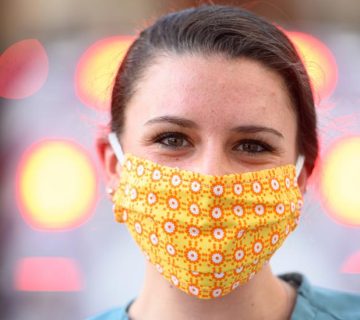
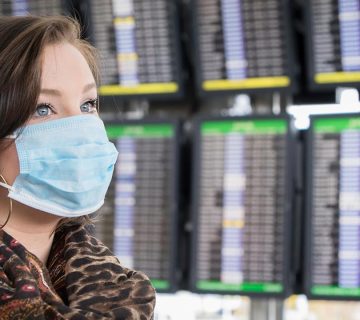
No comment